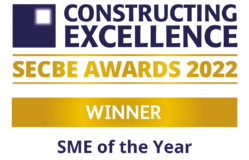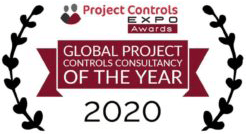Integrating BIM and Project Controls: Benefits, Challenges, and Success Factors
In the realm of construction and project management, the integration of BIM (Building Information Modelling) and Project Controls has emerged as a game-changer. It’s all about digitisation, a shift towards a more efficient and data-driven approach. Yet, despite its potential, there are challenges to overcome and success factors to consider. This blog explores the benefits, challenges, and key success factors associated with integrating BIM and Project Controls in the context of construction.
Benefits:
- Closing the Productivity Gap: Research suggests that by 2050, a higher level of digitisation in construction can reduce the productivity gap by nearly 25%. This digital transformation not only fosters growth in the digital strategy, but also leads to significant cost savings.
- Simplified Data Consolidation: Integration of BIM and Project Controls streamlines data consolidation, making performance reporting more straightforward. It reduces the effort required for reporting, offers visibility into data issues and assists the early detection of risk.
- Return on Investment: Integrating BIM and Project Controls can yield a substantial return on investment, potentially reaching a 100% ROI. It allows for faster production of forecasts and helps in compensating for late-occurring events.
Challenges:
- Data Management: In today’s digital world, managing data efficiently is crucial. “Data rebels” often lead to unstructured data, which can lead to inaccurate data. It’s essential to establish a configuration control process to ensure data consistency.
- Asset Breakdown Structure: The Asset Breakdown Structure plays a pivotal role in construction projects. It’s not solely the responsibility of information management or BIM specialists, however, it requires active involvement from project controls professionals.
- Integration with Schedules: Linking work breakdown structures with schedules enhances project efficiency. This integration allows for time-phased baselines and clear deliverables for Earned Value Management.
Success Factors:
- Teamwork and Vision: Successful integration of BIM and Project Controls relies on teamwork, a shared vision, and strong support from all stakeholders. It also requires the right systems and processes in place.
- Data Accuracy: BIM emphasizes accuracy and definition in content, creating a managed process based around a single model. This leads to a digital handover and operation, enhancing the project controls environment.
The Road Ahead – Future Potential:
The future holds exciting potential for integrating BIM and Project Controls. The automation of “progress capture” can make construction assessments more accurate and efficient. Capturing data visually and automatically saves time and enhances communication with stakeholders.
Summary:
BIM is not limited to product-related information; it extends to process-related data such as schedules, cost, sustainability, and facility management. This multi-dimensional approach to BIM aligns cost, schedule, and 3D model integration, leading to a 5D project controls environment. While BIM principles apply throughout the product life cycle, 4D and 5D project controls are particularly valuable during the preconstruction and construction phases, fostering collaboration and stakeholder involvement.
Incorporating BIM and Project Controls into construction projects offers a transformative pathway towards efficiency, accuracy, and cost savings. As the industry continues to evolve, the integration of these technologies will be a key driver of success and productivity.
If you would like more information on Integrating BIM and Project Controls, get in touch!
You can email us at info@logikalprojects.com
Or call on +61 1300 564 452 (APAC)
Or, you can use the Contact Us form here.






